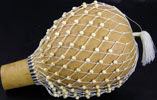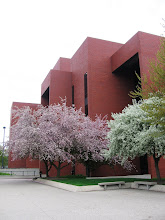
Newscaster and author Tom Brokaw called them the Greatest Generation, the valiant men and women who fought in World War II. Preserving the stories of their service, accomplishments, and sacrifices for future generations is an important and timely project for historians, librarians, archivists, and all of us who owe them so much.
Archives and Special Collections is a partner in the Library of Congress’ Veterans History Project to collect the memories, accounts, and documents of the nation’s war veterans. We have established a Veterans History Collection that includes audio and video interviews, letters, diaries, photographs, scrapbooks, and other materials documenting the lives of veterans.
As they are collected, the resources will be digitized and made available globally in the Ball State University Digital Media Repository (DMR), a project of the University Libraries. The DMR, http://libx.bsu.edu/, currently includes World War II films produced by the U. S. Government, 200 World War I posters, U. S. Civil War letters, diaries, and other materials, and audio and transcripts of oral histories. Here are some examples of a recent donation and a new project:
Scrapbook Documents Veteran’s Experiences
Joseph Morton Fisher of Muncie, Indiana, was inducted into the U. S. Army at Fort Benjamin Harrison in Indianapolis on December 23, 1942. Three days later, he was sent to Camp Hood, Texas, for basic training. He was assigned to the 607th Tank Destroyer Battalion where he remained throughout World War II. Fisher received the European ribbon with five battle stars for action in Normandy, Northern France, Ardennes, Rhineland, and Central Europe. He was awarded the Purple Heart for wounds received on April 21, 1945.
Fisher’s experiences are well documented in a scrapbook compiled by his mother, Vanchie Dell Fisher, from letters and other items that she received from her son while he was in service. The thick volume includes letters and other materials that he accumulated along the way from his first day of service until a few weeks before he was honorably discharged on December 2, 1945 with the rank of sergeant. It is a rich resource on the life of a World War II soldier. The 376th Heavy Bombardment Group
These soldiers contributed to victory in World War II by bombing enemy targets in North Africa and Europe. They flew 451 missions and received three Distinguished Unit Citations and 15 campaign awards. The 376th was credited with downing 220 enemy aircraft. They suffered 1,479 casualties and 169 aircraft were lost over almost four years.
Archives and Special Collections and University Libraries are pleased to participate in a new project to record and make available the memories of the members of this courageous group of veterans. The project is being conducted by Dr. David Ulbrich of the Ball State History Department in conjunction with the University Teleplex, History Department, and University Libraries. Dr. Ulbrich’s father, Richard, was lead bombardier in the 512th Squadron.
At the group’s reunion in Wisconsin in September 2007, Dr. Ulbrich and University Teleplex personnel will videotape interviews with members of the bombardment group. Those tapes will be preserved in Archives and Special Collections as the 376th Heavy Bombardment Group Oral History Project Collection. The Teleplex will provide digital copies to be made available in the Digital Media Repository and library personnel will create metadata to make them accessible and searchable.
To help the veterans understand the importance of preserving their memories through this project, Dr. Ulbrich and John Straw, Director for Archives and Special Collections, taped a video for viewing at the reunion. The message was simple: Ball State University is pleased and proud to collect, preserve, and make available the memories of the Greatest Generation.
Labels: 376 Heavy Bommbardment Group, Ball State University Libraries, Greatest Generation, Veterans History Project










